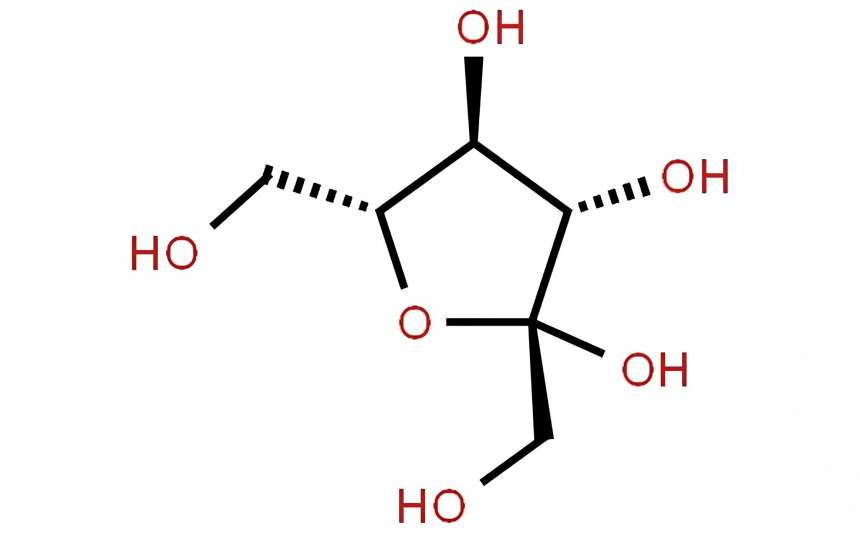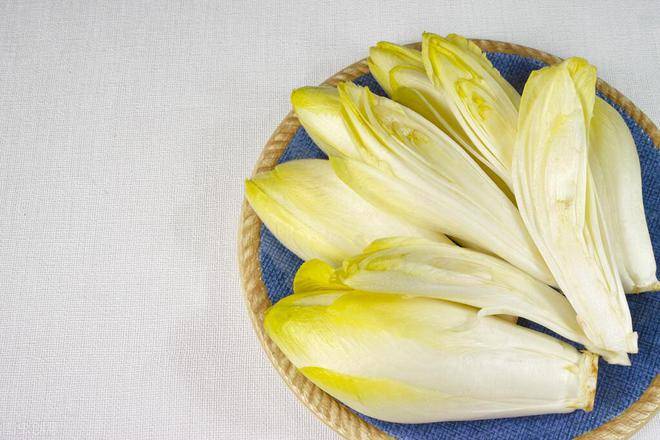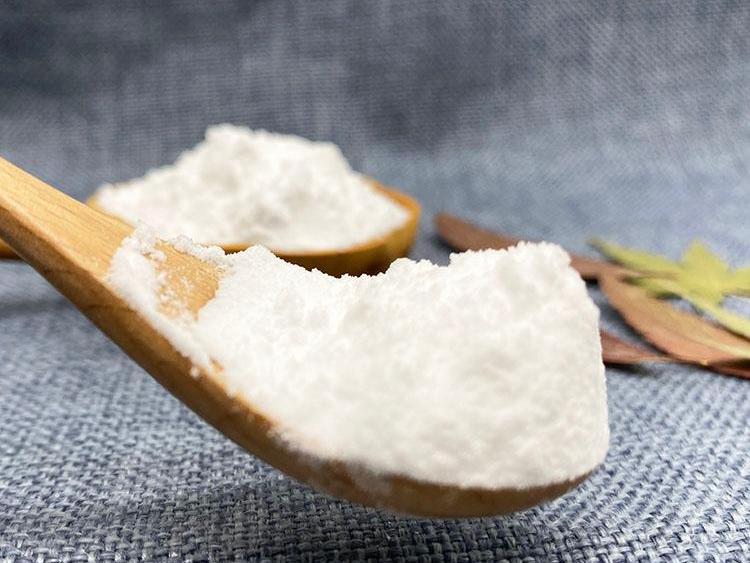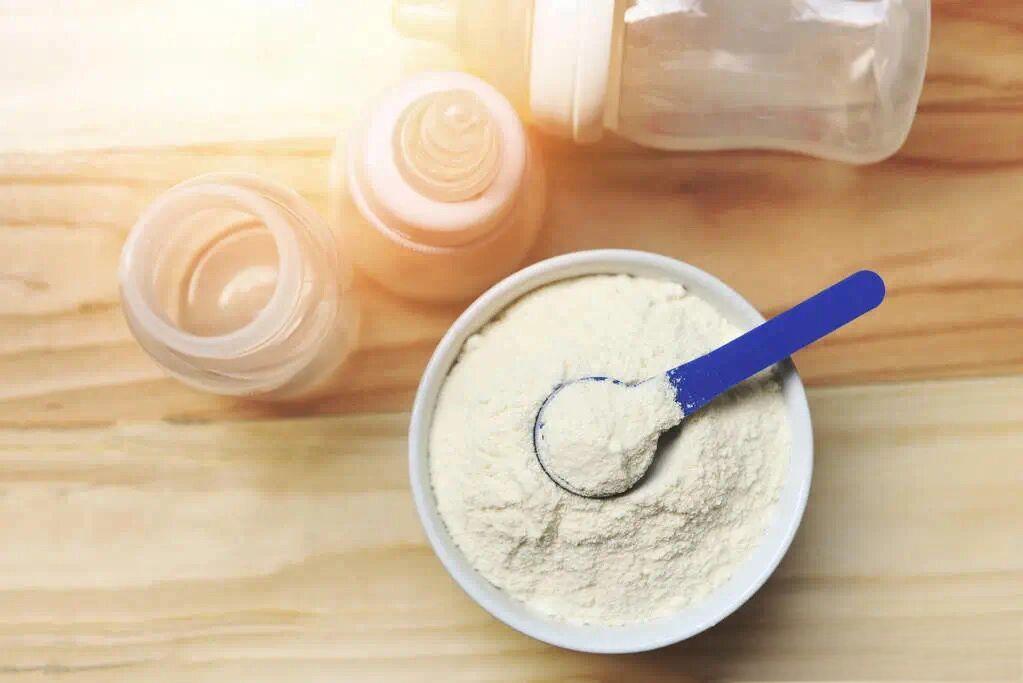What Foods Are High in Fructooligosaccharides?
Fructo-oligosaccharides (FOS), also known as fructooligosaccharides or sucrose fructo-oligosaccharides, are a functional oligosaccharide that can promote the proliferation of bifidobacteria, prevent the growth and colonization of harmful microorganisms, enhance the body's immune system, protect the liver, fight cancer, prevent tooth decay, and partially exert the physiological functions of dietary fiber [1]. As a typical prebiotic, FOS is now widely used in the fields of food, health care, medicine and feed. In recent years, FOS has attracted much attention and emphasis, especially in Europe and Japan, where its research and development applications are at the forefront of the world. This paper reviews the latest research progress on the biological effects, production technology and application status of FOS, with a view to providing a cutting-edge theoretical basis for further research and development.
1 Structure, properties and sources of FOS
1.1 Structure
FOS is a type of fructooligosaccharide (FOS) that is a mixture of fructo-oligosaccharides (GF2), fructo-oligosaccharides (GF3), and fructo-oligosaccharides (GF4), which are composed of one to three fructose units linked to the fructose residue of a sucrose molecule via a β-1,2 glycosidic bond. The general formula is G-F-Fn (G is glucose; F is fructose; n=1, 2, 3).

1.2 Properties
FOS with a purity of 95% is only about 30% as sweet as sucrose, and has a purer, fresher taste than sucrose. In vivo, the calorific value of FOS is only 1.5 kcal/g (40% of glucose), which is extremely low. Its viscosity decreases with increasing temperature. It is less hygroscopic and is suitable for slowing the moulding and deterioration of feed or food to ensure the shelf life of the product. FOS has similar thermal stability to sucrose under neutral conditions at 120°C, but is easily decomposed when heated under acidic conditions at pH 3–4. FOS is not only reducing, but also participates in the Maillard reaction, and has a significant inhibitory effect on starch retrogradation. This property is very suitable for starchy foods. In addition, FOS has good solubility, non-color, excipient properties, alkali resistance, anti-aging and other processing characteristics. Studies have shown that the total functional sugar retention rate of FOS decreases to 74% after 25 minutes at 121°C under neutral conditions, 31% under acidic conditions, and is stable under alkaline conditions [2].
1.3 Sources
FOS is found in many natural plants and some herbs, such as everyday vegetables and fruits, especially Jerusalem artichoke (16%–20%), asparagus (1%–20%), chicory (5%–10%), garlic (3%–6%), onion (2%–6%), leek (2%–5%), burdock (3.6%), wheat (1 % to 4%), as well as honey and bananas, which have high levels, and rye and tomatoes, which also contain small amounts.

2 FOS production
At present, there are two common industrial production methods for FOS: one is the hot water extraction and enzymatic hydrolysis of inulin from Jerusalem artichoke or chicory; the other is the enzymatic hydrolysis of sucrose as the raw material, which can be divided into the submerged fermentation method and the immobilized enzyme method according to whether the enzyme is immobilized or not.
2.1 Hot water extraction and enzymatic hydrolysis of inulin
Inulin is industrially produced internationally using two main raw materials: chrysanthemum and chicory. In Western European countries such as Belgium and the Netherlands, chicory is mostly used, while in China, Jerusalem artichoke is the main raw material. Inulin is a highly polymerized FOS (degree of polymerization: 2–60), which is not easily absorbed and utilized by the human body. However, after enzymatic hydrolysis, FOS with a degree of polymerization of 2–7 can be produced, and its structure is mostly Fm type (F: fructan molecule; m: fructose molecule number; F-F-F…Fm), and there is also a small amount of GFn type fructo-oligosaccharide (G: glucose molecule; F: fructan molecule; n: fructose molecule number, n=1~3).
Inulin obtained through modern separation and purification techniques has become a brand new, multifunctional ingredient in the food industry. As a water-soluble dietary fiber, it is not only an effective fat substitute, but also a significant bifidobacterium growth factor. Although the raw materials are different, the processes used are basically similar.
Take Jerusalem artichoke as an example. The specific process [3] is as follows:
acidolysis or enzymatic hydrolysis ↑ ↓
Jerusalem artichoke → washing → slicing → hot water extraction → purification → ion exchange resin → concentration and drying → FOS

2.2 Sucrose enzymatic hydrolysis
The sucrose enzymatic hydrolysis method uses sucrose as a raw material and uses the β-fructose transferase or β-fructofuranosidase produced during microbial fermentation to catalyze the intermolecular transfer of fructose groups to obtain FOS. Lobo et al. [4] reported that β-D-fructofuranosidase (β-fructofuranosidase, EC. 3. 2. 1. 26) catalyzes the hydrolysis of sucrose to glucose and fructose and the transfer of the fructose moiety to the fructose residue of the sucrose molecule, thereby synthesizing high levels of FOS.
There are two sources of fructosyltransferase: one is from plants, such as aloe, sugar beet, onions, Jerusalem artichoke, etc.; the other is from microorganisms, such as yeast, Aspergillus oryzae, Penicillium, Aspergillus niger, Aureobasidium pullulans, etc. Due to the weak catalytic activity of fructosyltransferases in plants and seasonal limitations, they are not suitable for industrial production. Therefore, industrial production of FOS uses enzymes produced by microorganisms [5].
β-Fructofuranosidase is an extracellular enzyme, and the optimal enzyme-producing strain for production can be obtained by screening a large number of strains [6]. Qin Yimin et al. [7] found that the optimal pH and temperature of Aspergillus oryzae GX0011 β-fructosyltransferase were 5.0–6.0 and 45 °C, respectively. Glucose is a competitive inhibitor of the enzyme, and ultrasound can improve enzyme activity to a certain extent. Low concentrations of ethanol have no significant effect on enzyme activity. Ghazi et al. [8] studied the purification and kinetic properties, and the results showed that the enzyme can transfer the fructose group from sucrose to produce the corresponding fructose oligomers, and has higher transfer activity than β-fructofuranosidase. The activity range is pH 5.0 to 7.0.
2.2.1 Deep fermentation method (batch production method)
In the deep fermentation method, the enzyme is directly added to a 50% to 60% sucrose solution, and the temperature and pH are controlled to catalyze the production of FOS. This method has simple process equipment, but it is less automated, has a lower yield, and is more expensive.
2.2.2 Immobilized enzyme method (continuous production method)
Compared with the sucrose enzymolysis method, the immobilized enzyme method has high operational stability, can realize the automation and continuity of the production process, has a high utilization rate of raw materials, and greatly reduces production costs. The production process is as follows:
β-fructose transferase or β-fructofuranosidase immobilization → 50%–60% sucrose solution → immobilized column or immobilized bed bioreactor (24 h, 50–60 °C) → sugar solution → activated carbon decolorization → ion exchange desalination → vacuum concentration → FOS syrup.
As can be seen from the process, the key to efficient FOS production lies in the enzymes and immobilization technology used. Compared with free enzymes, immobilized enzymes not only prevent enzyme loss and improve storage stability, but also improve enzymatic properties to increase their utilization rate and allow for repeated use, thereby achieving large-scale continuous, controllable, and simple industrial production [9].
There are two main methods for preparing immobilized enzymes: physical and chemical. Physical methods include physical adsorption and embedding methods. Embedding materials mainly include agarose, carrageenan, gelatin, sodium alginate, polyacrylamide, cellulose, etc. Among them, sodium alginate is non-toxic, safe, low in price, and easy to obtain, and is one of the most commonly used embedding materials in the immobilization process [10]. Zhang Yuanyuan et al. [11] used sodium alginate embedding, gelatin-sodium alginate composite embedding and glutaraldehyde-sodium alginate covalent crosslinking to immobilize β-D-fructofuranosidase from Aspergillus niger. From a comprehensive analysis of practical production applications, immobilized enzyme activity, and the operational stability of immobilized enzymes, the glutaraldehyde-sodium alginate cross-linking method is better.
2.3 Other
High-purity FOS (P-F0S) is prone to degradation when heated. Lv Xiaoling et al. [12] determined the appropriate drying process conditions through single-factor testing: cold trap temperature -50 °C, pre-freezing rate 12 °C/h, time 5–6 h, radiant heating temperature 40–55 °C, vacuum degree 550–600 Pa, drying cycle 10 to 16 h, to obtain flake-like P-F0S, which is processed to obtain the P-FOS dry powder product. Meanwhile, with the continuous development of new technologies, new production technologies such as microbial separation (fermentation), nanofiltration separation, and simulated moving bed (chromatographic separation) have also been applied, which not only realize the simple, efficient, and safe production of FOS, but also greatly improve the quality of the product. This is a new trend for future development.
3 Biological effects of FOS
3.1 Improves the balance of intestinal flora, inhibits intestinal putrefaction and relieves constipation
FOS cannot be directly digested and absorbed by the human body. After consumption, it reaches the large intestine and is fermented by intestinal bacteria to produce short-chain fatty acids such as acetic acid, propionic acid, and butyric acid, which lower the pH of the intestinal environment, thereby improving the balance of intestinal flora, promoting the proliferation of probiotics such as bifidobacteria and lactobacilli in the intestine, while inhibiting the growth and reproduction of harmful bacteria and pathogenic bacteria, reducing the production and accumulation of intestinal toxins and putrefactive substances, and promoting intestinal peristalsis, which has a relieving effect on constipation and diarrhea. The indigestibility of FOS and its effect on the proliferation of bifidobacteria are mainly due to the small molecular weight fructose oligomers. Therefore, the higher the sucrose triose content, the higher the health benefits of FOS in terms of bifidobacteria proliferation.
Kapiki et al. [13] found that a small amount of oligosaccharide prebiotics in infant formula can promote the rapid growth of Bifidobacterium in the intestines of premature infants who are artificially fed, while reducing the number of pathogenic microorganisms in the intestines. The effect of bacteria on oligosaccharide metabolism can be studied by measuring the production of short-chain fatty acids and the pH of the feces [14]. In addition, due to the rapid proliferation of bifidobacteria after FOS intake, the growth of putrefactive bacteria such as Escherichia coli, Salmonella and Clostridium perfringens is greatly inhibited, and the production of toxic metabolites (such as indole and nitrosamines) is reduced.

3.2 Improves lipid metabolism and lowers blood lipids and cholesterol
FOS can effectively reduce serum cholesterol, triglycerides and free fatty acids, and has a good effect on improving a series of cardiovascular diseases caused by high blood lipids, such as hypertension and atherosclerosis. Yen et al. [15] studied and evaluated the effect of FOS supplementation on fecal bifidobacteria, lipid peroxidation indicators, nutritional status indicators, and the sustainability of fructooligosaccharide effects in nursing home residents with constipation.
3.3 Promotes the absorption of minerals and nutrients such as calcium
FOS cannot be broken down by digestive enzymes and is fermented by bacteria in the large intestine to produce L-lactic acid, which lowers the pH of the intestine. The acidic conditions created by this increase the dissolution rate of minerals such as calcium, magnesium, iron and zinc. Heuvel et al. [16] found that the sustained intake of short-chain FOS (sc-FOS) for 36 days promoted the absorption of magnesium in adolescent girls without affecting the absorption of calcium.
Studies have shown that the addition of FOS causes the cecum to enlarge and increases the acidity in the cecum (p < 0. 01), and that FOS can effectively promote the absorption of calcium (FOS1, +7%; FOS2, +9%, p < 0. 05), magnesium (FOS1, +26%; FOS2, +19%, p < 0. 05), and iron (FOS1, +17 %; FOS2, +22%, p < 0. 05) and restored the absorption rate of phytic acid-damaged magnesium and iron (p< 0. 01). In addition, FOS significantly increased liver zinc levels (p < 0. 01) and liver magnesium levels (p < 0. 01). All these data indicate that FOS can effectively improve the absorption rate of minerals and counteract the harmful effects of phytic acid [17]. Asvarujanon et al. [18] reported that FOS can increase the absorption of calcium, magnesium and iron in normal rats and ovariectomized rats, but its effect may be related to the fermentation of these sugars in the cecum.
3.4 Improves immunity and reduces cancer risk
FOS can improve immune system function and overall health, and improve the body's microecology. It can promote the natural formation of vitamins B1, B2, B3, B6, B12 and folic acid, thereby improving the body's metabolism, immunity and resistance to disease. Tai Xiulin et al. [19] showed that FOS can improve the growth performance of calves, prevent intestinal atrophy in early weaned calves, maintain the normal morphological structure of the intestine, affect the metabolism of calves, improve the immune performance of calves, and relieve the stress of weaning on calves.
3.5 Protect teeth
Tooth decay is one of the common oral diseases in children in China, mostly caused by the erosion of oral microorganisms, especially Streptococcus mutans. FOS cannot be used by Streptococcus mutans to produce insoluble glucan, which provides a place for oral microorganisms to deposit, produce acid and corrode (tartar), so it can prevent tooth decay.

3.6 Other
It has been reported that the intake of polyphenol concentrate together with FOS can promote the metabolism of quercetin glycosides in the cecum of mice [20]. Bruzzese et al. [21] reported that FOS can prevent intestinal and extraintestinal infections. Recent studies have demonstrated the clinical benefits of using prebiotics in combination with infant formula. First, it has been shown to reduce the incidence of atopic dermatitis in high-risk infants in developing countries, and second, to reduce the incidence of intestinal diseases and the probability of respiratory tract infections in the first year of life [22]. According to Sherman et al. [23], infant primary prevention trials have provided promising data on the prevention of infections and allergic dermatitis. In addition, the addition of a certain amount of oligosaccharide mixture as a supplement has a certain effect on the primary prevention of atopic dermatitis in infants at low risk [24].
4 Current status of FOS application
4.1 Application in food and health products
FOS is known as the most promising new generation of additives after the antibiotic era – prebiotics. Currently, FOS is used in a variety of foods in Europe, the United States, Japan and other countries, including dairy products, lactic acid drinks, solid drinks, confectionery, biscuits, bread, jelly, cold drinks, soup, cereals and more. The addition of FOS not only improves the nutritional and health benefits of foods, but also effectively extends the shelf life of a variety of foods such as ice cream, yogurt and jam. In addition, FOS has a low calorific value, i.e. it does not cause obesity, nor does it raise blood sugar or insulin. It is an ideal new sweetener with health benefits that can be used as a food base in foods to meet the needs of diabetics, obese patients, hypoglycemic patients, etc.
In recent years, FOS has also been widely used in infant foods, especially in dairy products such as infant milk powder, pure milk, flavored milk, fermented milk, lactic acid bacteria drinks, and various milk powders. Many brands of milk powder on the market already have FOS added. Adding prebiotics such as FOS, inulin, galacto-oligosaccharides, and lactulose in moderate amounts to infant milk powder can increase the growth of microorganisms such as bifidobacteria or lactobacilli in the colon, may therefore have a beneficial effect [26].
Jiang Zhanmei et al. [25] used fresh milk as the raw material, added functional factors such as inulin, FOS, pine nuts and bitter almonds, and developed a health-preserving yogurt with the effect of preventing constipation through fermentation. Si Junling et al. [26] optimized the production process and the optimal ratio of FOS yogurt, namely: 6% FOS, 5% added sugar, 4% inoculum, and the ratio of bacteria (Streptococcus thermophilus and Lactobacillus acidophilus) is l: l, so that the number of Lactobacillus acidophilus reaches more than 10 cfu/mL. In addition, FOS is used as a bioactive prebiotic and water-soluble dietary fiber in drinking water. It not only meets the basic physiological functions and metabolic needs of the human body, but also promotes overall human health when consumed over the long term. Its effects complement and enhance each other [27].
4.2 Application in animal feed
FOS is stable in nature. It can improve the intestinal microflora, promote animal intestinal development, regulate protein and lipid metabolism, promote mineral absorption, improve feed conversion rate, improve the quality and quantity of milk and egg production and egg shell hardness, reduce the smell of manure, and directly or indirectly stimulate the immune activity in animals in a positive way. It has the effect of antibiotics, does not produce drug resistance, and is called prebiotics (microecological agents) [28]. In addition, FOS is also used in the feed of warm-blooded animals such as the “national treasure” giant panda. Feeding FOS can strengthen the giant panda's constitution and prevent and treat conditions such as abdominal pain, anorexia, and loose stools.
5 Prospects
At present, the production and use of FOS products in Asia, North America and Europe are on the rise. As the market develops, the demand for FOS in the domestic and foreign food industries, feed industries and breeding industries will continue to grow.
In terms of production, it is necessary to continuously optimize the processing technology using chicory, Jerusalem artichoke and sucrose as raw materials, improve engineering equipment, and increase research and development of related FOS products. At the same time, not only should research on the screening of highly active bacterial strains and the properties of β-fructosyltransferase continue, but research on the isolation, sequencing, cloning and expression of β-fructosyltransferase functional genes should also be strengthened using modern biotechnology, with a view to constructing genetically engineered bacterial strains, further optimizing the immobilization process, and comprehensively improving FOS production technology. In actual production, the strain should be further screened for strains with high-activity enzymes using techniques such as protein engineering. In terms of the process, efforts should be made to improve the enzyme's lifespan and stability and to remove the glucose by-product of the enzyme reaction, thereby obtaining higher-yield, high-quality FOS.
In terms of efficacy, the many health benefits of FOS have been widely studied and are generally recognized. However, there are different conclusions regarding the improvement of lipid metabolism, such as lowering cholesterol, lowering blood sugar, and preventing hypertension. The conclusions regarding the anti-tumor effect are also limited to animal experiments. The mechanism of action, the synergistic effect with prebiotics, and prospective clinical trials all need to be further studied and clarified.
In terms of application, further research and development is still needed for products with high purity, non-toxicity, good safety and high added value. While improving the economic benefits of the product, more importantly, it can provide social benefits such as improving product quality, upgrading product grades and extending product freshness for many industries. In addition, FOS has great potential in the production of bifidogenic feed, promoting the regulation of various endangered wild rare animals after the shift from the microecological balance in the wild to the microecological imbalance after artificial breeding. It is believed that with the continuous progress of science and technology, research related to FOS will continue to mature, benefiting society and mankind.
References
[1] Ding Xiaowen, Zhou Caiqiong. Principles of Health Food [M]. Chongqing: Southwest Normal University Press, 2008: 179-180. .
[2] Duan Sufang, Zhang Jinzhe, Zhou Zhiqiao, et al. Effect of heat treatment on the stability of functional oligosaccharides [J]. Food and Fermentation Industry, 2009, 35(3): 90-94.
[3] Yin Hong, Lin Xuejin. Research progress of inulin and fructooligosaccharides [J]. China Food Additives, 2008, (3): 97-101.
[4] Lobo AR, Hlho JM, Alvares EP, et a1. Effects of Dietary Lipid Composition and Inulin-type Fructans on Mineral Bioavailability in Growing Rats [J]. Nutrition, 2009, 25(2): 16-25.
[5] Wang Limei, Qi Bin. Research progress of microbial fructooligosaccharide synthase [J]. Food Science, 2008, 29(8): 673-675.
[6] Wang Xue. Research progress of fructose transferase and fructooligosaccharide production [J]. Cereals, Oils and Fats, 2009, (5): 45-48.
[7] Qin Yimin, Tang Jiangtao. Research on the properties of Aspergillus oryzae GX0011 β-fructosyltransferase [J]. Food Industry Science and Technology, 2007, 28(5): 123-126.
[8]Ghazi I, Fernandez-Arrojoa L, Garcia-Arellano H, et al. Purification and kinetic characterization of a fructosyltransferase fromAspergillus aculeatus[J], Journal of Biotechnology, 2007, 128(1): 204-211.
[9] Wang Xiaolan, Sun Bingbing, Yang Zhiping. Research on the isolation and purification and immobilization of D-amino acid oxidase [J]. Journal of Nanchang University: Engineering Edition, 2008, 30(2): 1l2-1l5.
[10] Han Wenjing. A novel preparation method for immobilized enzymes and its application in the food industry [J]. Food Industry Science and Technology, 2009, (2): 345-347, 351.
[11] Zhang Yuanyuan, Nie Shaoping, Wan Cheng, et al. Immobilization of β-D-fructosidase produced by Aspergillus oryzae [J]. Journal of Nanchang University: Science Edition, 2010, 34(3): 243-248.
[12] Lv Xiaoling, Ding Jicheng, Ma Shuqing. Preliminary study on the preparation of high-purity fructooligosaccharides by vacuum freeze-drying [J]. Food and Fermentation Industry, 2008, 34(12): 72-74.
[13]Kapiki A, Costalos C, Oikonomidou C, et al. The effect of a fructo-oligosaccharide supplemented formula on gut flora of preterm infants[J] . Early Human Development, 2007, 83(5): 335-339.
[14]Villares J M. Prebióticos en las fórmulas para lactantes. Podemos modifi car la respuesta inmune?[J] . Anales de Pediatría, 2008, 68(3): 286-294.
[15]Yen CH, KuoY W, Tseng Y H, et al. Beneficial effects of fructo-oligosaccharides supplementation on fecal bifidobacteria and index of peroxidation status in constipated nursing-home residents-A placebo- controlled, diet-controlled trial[J]. Nutrition, 2011, 27(3): 323-328.
[16]Heuvel E, Muijs T, Brouns F, et al. Short-chain fructo- oli gosaccharides improve magnesium absorption in adolescent girls with a low calcium intake[J]. Nutrition Research, 2009, 29(4): 229-237.
[17]Wang Y, Zeng T, Wang S E, et al . Fructo- oligosaccharides enhance the mineral absorption and counteract the adverse effects of phytic acid in mice[J]. Nutrition, 2010, 26(3): 305-311.
[18]Asvarujanon P, Ishizuka S, Hara H. Promotive effects of non-digestible disaccharides on rat mineral absorption depend on the type of saccharide[J] . Nutrition, 2005, 21(10): 1025-1035.
[19] Tai Xiulin, Long Xiang, Xiang Zhao, et al. Effects of oligofructose on growth performance, blood physicochemical indicators and intestinal mucosal morphology of early weaned calves [J]. Chinese Journal of Animal Science, 2009, 11: 34-38.
[20]Ju kiewicz J, Milala J, Jurgoński A, et al. Consumption of polyphenol concentrate with dietary fructooligosaccharides enhances cecal metabolismof quercetin glycosides in rats[J]. Nutrition, 2011, 27(3): 351-357.
[21]Bruzzese E, Volpicelli M, Squeglia V, et al. A formula containing galacto-and fructo-oligosaccharides prevents intestinal and extra-intestinal infections: An observational study[J]. Clinical Nutrition, 2009, 28(2): 156-161.
[22]Villares J M. Prebióticos en las fórmulas para lactantes. Podemos modifi car la respuesta inmune?[J] . Anales de Pediatría, 2008, 68(3): 286-294.
[23]Sherman P M, Cabana M, Gibson GR, et al. Potential Roles and Clinical Utility of Prebiotics in Newborns, Infants, and Children: Proceedings froma Global Prebiotic Summit Meeting, New York City, June 27-28, 2008[J] . The Journal of Pediatrics, 2009, 155(5): S61-S70.
[24]Grüber C, Stuijvenberg MV, Mosca F, et al. Reduced occurrence of early atopic dermatitis because of immunoactive prebiotics among low-atopy-risk infants[J]. Journal of Allergy and Clinical Immunology, 2010, 126(4): 791-797.
[25] Jiang Zhanmei, Zheng Wenjing, Huang Zhanquan, et al. Development of anti-constipation yogurt [J]. China Dairy Industry, 2010, 64(2): 28-29.
[26] Si Junling, Zheng Jianqiang. Research on low-fructose acid milk [J]. Food Industry Technology, 2008, 248(9): 222-223.
[27] Xie Yongkui, Wu Jianfeng, Chen Xiaolin. Application of oligofructose in bottled functional water [J]. China Food Additives, 2008, (4): 119-121.
[28] Shi Xiaoli. Production process and application of oligofructose [J]. Farming and Feed, 2010, (5): 45-48.


 English
English French
French Spanish
Spanish Russian
Russian Korean
Korean Japanese
Japanese






